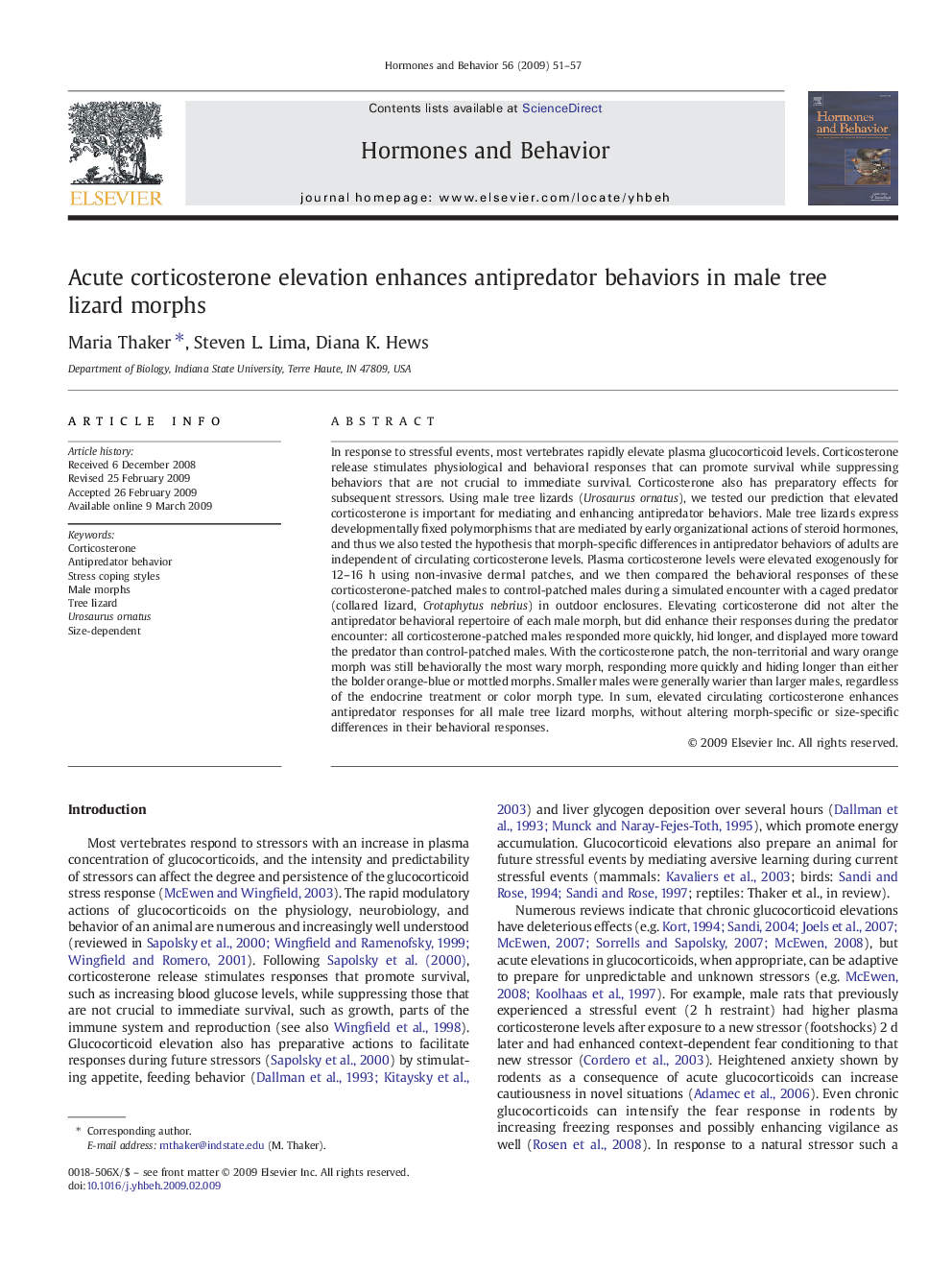| Article ID | Journal | Published Year | Pages | File Type |
|---|---|---|---|---|
| 10301537 | Hormones and Behavior | 2009 | 7 Pages |
Abstract
In response to stressful events, most vertebrates rapidly elevate plasma glucocorticoid levels. Corticosterone release stimulates physiological and behavioral responses that can promote survival while suppressing behaviors that are not crucial to immediate survival. Corticosterone also has preparatory effects for subsequent stressors. Using male tree lizards (Urosaurus ornatus), we tested our prediction that elevated corticosterone is important for mediating and enhancing antipredator behaviors. Male tree lizards express developmentally fixed polymorphisms that are mediated by early organizational actions of steroid hormones, and thus we also tested the hypothesis that morph-specific differences in antipredator behaviors of adults are independent of circulating corticosterone levels. Plasma corticosterone levels were elevated exogenously for 12-16Â h using non-invasive dermal patches, and we then compared the behavioral responses of these corticosterone-patched males to control-patched males during a simulated encounter with a caged predator (collared lizard, Crotaphytus nebrius) in outdoor enclosures. Elevating corticosterone did not alter the antipredator behavioral repertoire of each male morph, but did enhance their responses during the predator encounter: all corticosterone-patched males responded more quickly, hid longer, and displayed more toward the predator than control-patched males. With the corticosterone patch, the non-territorial and wary orange morph was still behaviorally the most wary morph, responding more quickly and hiding longer than either the bolder orange-blue or mottled morphs. Smaller males were generally warier than larger males, regardless of the endocrine treatment or color morph type. In sum, elevated circulating corticosterone enhances antipredator responses for all male tree lizard morphs, without altering morph-specific or size-specific differences in their behavioral responses.
Related Topics
Life Sciences
Biochemistry, Genetics and Molecular Biology
Endocrinology
Authors
Maria Thaker, Steven L. Lima, Diana K. Hews,
